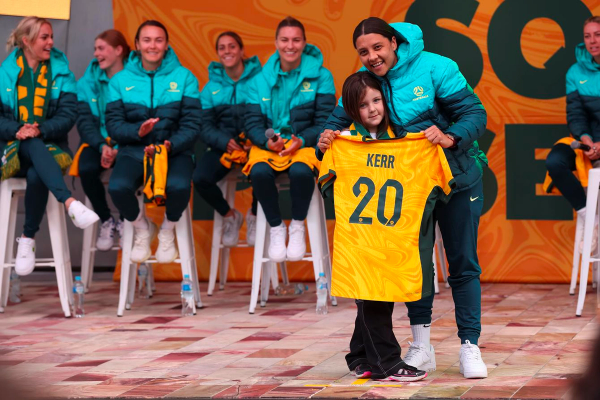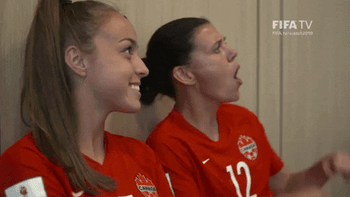Football Australia is taking the next steps to grow the sport Down Under

The GIST: Before Australia hosted the 2023 WWC, many Aussies didn’t plan on watching their Matildas take the field during the tournament. But when Australia went on a magical semifinals run, the nation swelled with pride and tuned in at record rates. Now, Football Australia is making sure women’s footy takes the next step Down Under.
The wins: Australia was home to several major WWC hosting wins, including record attendance of 1.9M and $570M in revenue, allowing the tourney to break even for the first time. And when 7.13M Aussies tuned in to the England-Australia semifinal, it was the most-watched program nationally since 2001.
- Football Australia also worked with the National Indigenous Advisory Group (NIAG) to advance Indigenous representation at the WWC. It marked the first time the First Nations flag was flown and host cities were called by both their English and Indigenous names — but more still needs to be done in this ongoing collab.
The change: The Australian Sports Commission issued a government survey, finding more people watched the WWC than initially expected (78% vs. 48%), a viewership percentage in line with the Tokyo 2020 Olympics. It makes sense considering the Matildas saw the highest WWC media engagement (90%) of all the teams in the tourney. Cool by association.
- And 75% of those who consumed WWC coverage either felt moments of Australian pride or interest in participating in or encouraging their child to join sports. Plus, 36% said they felt increased pride in Aussie sport, the highest percentage since the report began in 2020.
Looking ahead: After the WWC, Football Australia created a strategic plan called Legacy '23 to develop the grassroots game amid a 6% participation boost among women and girls since 2020. Legacy '23 has received nearly $330M in government funding after Australia’s prime minister promised $128M for improved facilities. Thanks, Sam.
- Beyond that, Football Australia is manifesting a “Golden Decade” to keep the momentum going by bidding for the 2026 AFC Women’s Asian Cup and the expanded 2029 men’s FIFA Club World Cup (WC), culminating in a finale at the 2032 Brisbane Olympics.
The takeaway: Australia serves as a helpful blueprint for how the U.S. can leverage international tournaments to boost national interest in soccer, starting with the inaugural Concacaf W Gold Cup in 2024, the 2026 men’s WC, and continuing — hopefully — with the 2027 WWC before LA28. In their golden era.
Enjoying this article? Want more?

Sign up for The GIST and receive the latest women's sports business news straight to your inbox three times a week


